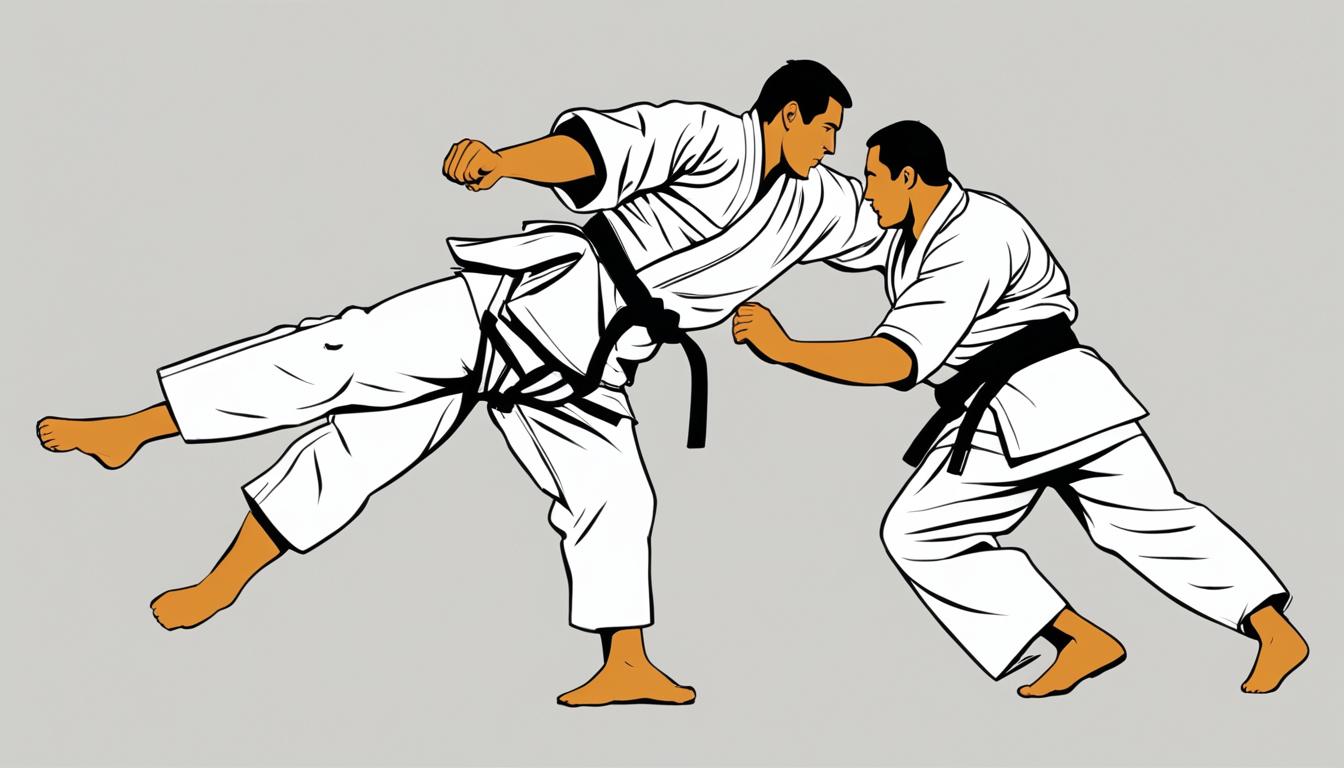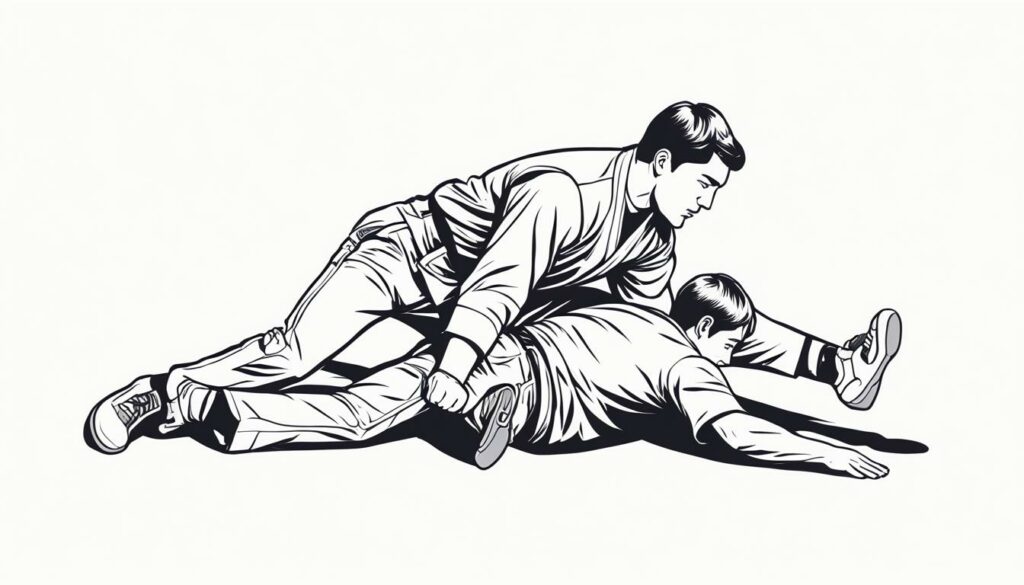The International Judo Federation’s decision to ban leg grabs in 2013 sparked controversy and debate among judo enthusiasts worldwide. For over a century, leg grabs were a common and integral part of competitive judo. However, with the implementation of the ban, leg grabs in standing grappling (tachi-waza) became completely illegal in judo competitions.
While the exact reason behind the ban remains unknown, several theories have been proposed. One theory suggests that the ban was a response to alleged abuse by Russian judo athletes. Another theory claims that the ban was instituted to distinguish judo from wrestling, ensuring its unique identity. Whatever the reason, the ban has significantly impacted the sport, forcing competitors to adapt their strategies and techniques.
In this article, we will delve into the details of the leg grab ban in judo, exploring its implications for the sport itself and its possible applications in self-defense scenarios. Let us explore this intriguing topic further.
Key Takeaways:
- The International Judo Federation banned leg grabs in 2013, after allowing them for over 100 years in competitive judo.
- The exact reason for the ban is unknown, but theories range from alleged abuse by Russian judo athletes to maintaining judo’s unique identity.
- The ban has impacted traditional judo techniques, leading to a shift in strategies and the development of new approaches.
- While leg grabs are banned in competitive judo, they can still have practical applications in self-defense scenarios.
- Leg grabs offer opportunities for controlling an attacker’s movement and disrupting their balance.
What Is a Leg Grab in Judo?
A leg grab in judo refers to the act of grabbing the legs or trousers of an opponent to disrupt their balance. Leg grabs were initially banned in 2010 for standing grappling, and the ban was strengthened in 2013 to include any contact with the legs or trousers during a standing grapple. The ban applies to both the legs and trousers, as Judo has specific rules regarding the length of trousers, which must be no more than 5 cm above the ankle. Leg grabs were not the first technique to be banned in competitive judo, as foot sweeps and head dives have also been prohibited for safety reasons.
Leg grabs play a significant role in the dynamics of judo, as they allow for effective destabilization and control of opponents. By targeting an opponent’s legs or trousers, a judoka can disrupt their balance and create opportunities for throws or takedowns. However, due to safety concerns and a desire to maintain the integrity and distinctiveness of the sport, leg grabs have been banned in competitive judo.
The Evolution of the Leg Grab Ban
In 2010, the International Judo Federation first prohibited leg grabs in standing grappling, recognizing the potential for injuries and unintended consequences that could arise from the technique. However, this initial ban did not cover all forms of leg grabs. It wasn’t until 2013 that the ban was strengthened, extending to any contact with the legs or trousers during a standing grapple.
The prohibition of leg grabs in judo competitions aims to ensure the safety of athletes and maintain a level playing field. By eliminating leg grabs, judo competitions can focus on throws and techniques that adhere to the revised rules while still showcasing the skill, agility, and strategic prowess of the participants.
Impact on Judo Techniques and Strategies
The ban on leg grabs in judo has led to a shift in the techniques and strategies employed by judo practitioners. With leg grabs no longer a viable option, competitors have had to adapt and explore alternative routes to control and manipulate their opponents. This has resulted in the development of new throwing techniques and creative approaches to engagement.
While some traditional techniques have become obsolete due to the ban, judo has evolved to emphasize a broader range of skills and tactics. Competitors have focused on refining their standing throws, grip fighting, and groundwork strategy to maintain a competitive edge within the revised rules.
Leg Grab Techniques Banned in Judo
| Leg Grab Technique | Description |
|---|---|
| Single Leg Grab | Grasping one of the opponent’s legs to disrupt balance and execute a throw or takedown. |
| Double Leg Grab | Simultaneously grabbing both of the opponent’s legs to destabilize and control their movement. |
| Pant Grab | Taking hold of an opponent’s trousers to manipulate their balance and create an opening for an attack. |
Table: Leg Grab Techniques Banned in Judo
Theories Behind the Leg Grab Ban
The exact reason for the ban on leg grabs in judo remains a mystery, as the International Judo Federation has not provided an official explanation. However, several theories have been proposed to shed light on this controversial decision.
Russian Allegations
One theory suggests that the ban was a response to alleged abuse of leg grabs by Russian judo athletes during competitions. It was speculated that these athletes were exploiting leg grabs to gain an unfair advantage over their opponents. However, this theory lacks substantial evidence, as Russian judo athletes continued to achieve success even after the ban was implemented.
Counterattacking Concerns
Another theory proposes that leg grabs made counterattacking too easy, resulting in a less exciting and dynamic form of judo. By restricting leg grabs, the International Judo Federation aimed to encourage more diverse and strategic forms of attack and defense. This theory suggests that the ban was implemented to ensure the sport’s overall competitiveness and spectacle.
Olympic Committee Influence
A more compelling theory speculates that the International Olympic Committee (IOC) exerted pressure on the International Judo Federation to ban leg grabs. This theory suggests that the IOC wanted to preserve the unique identity of judo and ensure its aesthetic appeal remained intact. By preventing judo from resembling freestyle wrestling in its approach, the IOC aimed to maintain a clear distinction between the two Olympic sports.
While these theories are not definitive explanations, they provide insights into the controversy surrounding the ban on leg grabs in judo.
Impact of the Leg Grab Ban in Judo
The ban on leg grabs in judo has had a significant impact on the martial art. Many traditional throws and controls that involved leg grabs are no longer viable in competitive judo. This has led to a shift in strategies and techniques used by judo competitors. The ban has also sparked debate within the judo community, with some arguing that the sport has lost certain aspects of its effectiveness and aesthetic appeal. However, the ban has also resulted in the development of new techniques and approaches in judo, as competitors adapt to the rule changes.
| Impact of the Leg Grab Ban in Judo |
|---|
| Loss of traditional throws and controls involving leg grabs |
| Shift in strategies and techniques used by judo competitors |
| Debate within the judo community regarding effectiveness and aesthetic appeal |
| Development of new techniques and approaches in judo |
Leg Grabs in Self-Defense Scenarios
While leg grabs are banned in competitive judo, they can still have practical applications in self-defense scenarios. Leg grabs can be useful for controlling an attacker’s movement and disrupting their balance. For example, grabbing an attacker’s pant leg can be effective in slowing down their movements during a side-headlock attack or a clinch situation where they are attempting knee strikes. By grabbing onto the pant legs, an individual can root their attacker’s leg to the floor, making it harder for them to continue their attack and allowing for opportunities to escape or counter.
| Benefits of Leg Grabs in Self-Defense Scenarios | Challenges of Using Leg Grabs in Self-Defense |
|---|---|
|
|
While the ban on leg grabs has limited their use in competitive judo, practitioners can still explore their potential effectiveness in self-defense situations. By understanding the benefits and challenges associated with leg grabs, individuals can make informed decisions regarding their use in real-life scenarios.
Controlling Legs in Ground Scenarios
In ground scenarios where an individual is grappling with a standing attacker, controlling the legs by grabbing onto the clothing can be a valuable self-defense technique. Not only does it help prevent kicks and stomps, but it also disrupts the attacker’s balance, giving the defender an advantage.
By grabbing onto the pant legs, the defender can restrict the attacker’s movement and reduce their ability to generate power in their strikes. This limitation opens up opportunities for the defender to strike the attacker’s legs, further immobilizing them and reducing their effectiveness.
Casey, a seasoned martial artist, finds herself in a confrontation with a larger and stronger attacker. As the attacker tries to throw punches, Casey quickly grabs onto the pant legs, anchoring herself and disrupting the attacker’s balance. With the attacker’s legs under control, Casey delivers powerful strikes to the attacker’s legs, neutralizing their advantage and creating an opportunity for escape.
While controlling the legs in ground scenarios can be advantageous, it’s essential to consider the risks and limitations. The act of grabbing onto the pant legs may tie up the defender’s hands and limit other defensive options. It’s important to assess the situation and choose appropriate techniques based on the context of the self-defense scenario.
Benefits and Challenges of Leg Grabs
Leg grabs in judo have been praised for their effectiveness and ability to break an opponent’s balance. They offer unique options for throws and controls that can catch opponents off guard.
In the context of self-defense scenarios, leg grabs can provide valuable benefits. By employing leg grabs, individuals can gain control over an attacker’s movement, disrupting their balance and creating openings for strikes or escapes. In situations where an opponent is attempting knee strikes or executing a side-headlock attack, grabbing their pant leg can effectively slow down their movements, making it harder for them to continue their assault.
However, it is important to acknowledge the challenges associated with using leg grabs. One potential challenge is that leg grabs can tie up the hands and arms, limiting the practitioner’s defensive options. This can potentially expose them to other forms of attack or limit their ability to counter effectively.
Ultimately, the decision to utilize leg grabs in self-defense should be based on a careful evaluation of the benefits and limitations in the specific context. While leg grabs offer unique advantages in controlling an opponent’s movement, practitioners should consider the potential risks and ensure they have additional defensive strategies in their arsenal.
Overall, leg grabs in judo provide a powerful tool for breaking an opponent’s balance and creating advantageous positions. However, they require a careful consideration of their impact on self-defense situations. By understanding the benefits and challenges of leg grabs, individuals can make informed decisions about their inclusion in their martial arts training and self-defense practices.
Examples of Benefits and Challenges of Leg Grabs
| Benefits of Leg Grabs | Challenges of Using Leg Grabs |
|---|---|
|
|
Personal Experiences and Training Considerations
Although leg grabs are no longer permitted in competitive judo, many instructors and practitioners continue to incorporate these techniques into their training, particularly for self-defense purposes. The inclusion of leg grabs can be invaluable in developing the ability to think and act under pressure, as well as understanding and defending against leg grab attacks.
By including leg grabs in self-defense training, individuals can become more comfortable with being thrown and grabbed, enabling them to develop effective strategies for handling dynamic and unpredictable situations. This training approach allows practitioners to enhance their overall skills, including timing, balance, and body positioning, which are vital for successful execution of judo leg grab techniques.
However, it is crucial to approach leg grab training responsibly and consider the context and practicality of these techniques in real-life self-defense scenarios. While leg grabs can provide valuable tools for controlling an attacker’s movement and disrupting their balance, practitioners must also be aware of the potential risks and limitations. Training should focus on adaptable strategies that include a wide range of techniques to address various self-defense situations effectively.


